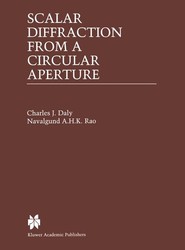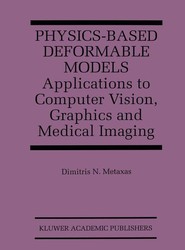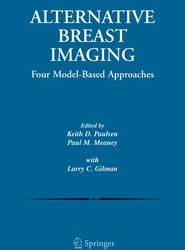(To see other currencies, click on price)
MORE ABOUT THIS BOOK
Main description:
Dynamic Neural Field Theory for Motion Perception provides a new theoretical framework that permits a systematic analysis of the dynamic properties of motion perception.
This framework uses dynamic neural fields as a key mathematical concept. The author demonstrates how neural fields can be applied for the analysis of perceptual phenomena and its underlying neural processes. Also, similar principles form a basis for the design of computer vision systems as well as the design of artificially behaving systems. The book discusses in detail the application of this theoretical approach to motion perception and will be of great interest to researchers in vision science, psychophysics, and biological visual systems.
Contents:
1 Introduction.- I Basic Concepts.- 2 Visual perception of motion.- 2.1 Apparent Motion (AM).- 2.2 Motion Energy Models.- 2.3 Motion Correspondence Problem.- 2.4 Cooperativity in Motion Perception.- 2.5 Motion Perception as Regularization Problem.- 2.6 Motion Perception as Statistical Optimization Problem.- 2.7 Motion Perception as Dynamical Process.- 2.8 Motion Transparency.- 2.9 Adaptation.- 2.10 Summary.- 3 Basic principles of the dynamic approach.- 3.1 Central Idea.- 3.2 Behavioral Variables.- 3.3 Behavioral Dynamics.- 3.4 Stability.- 3.5 Bifurcations.- 3.6 Intrinsic Dynamics and Behavioral Information.- 3.7 Comparison between Theory and Experiment.- 3.8 Summary.- 4 Dynamic neural fields.- 4.1 Biological Motivation.- 4.2 Generalization by the Dynamic Approach.- 4.3 Amari Model: Intuitive Concepts.- 4.3.1 Field without Interaction.- 4.3.2 Field with Linear Interaction.- 4.3.3 Neural Field with Constant Input.- 4.3.4 Neural Field with Slightly Varying Input.- 4.4 Amari Model: Mathematical results.- 4.5 Summary.- II Model for Motion Perception.- 5 Dynamic neural field model for motion perception.- 5.1 Perceptive Space.- 5.2 Neural Activation Field.- 5.3 Dynamical State and Stability.- 5.4 Specification by the Stimulus.- 5.5 Cooperativity.- 5.6 Fluctuations.- 5.7 Adaptation.- 5.8 General Neural Field Model.- 5.9 Summary.- 6 Necessity of the concepts: Model for the motion quartet.- 6.1 Dynamical Model for the Motion Quartet.- 6.1.1 Perceptive Space, Activation Dynamics, and Fluctuations.- 6.1.2 Cooperativity.- 6.1.3 Adaptation.- 6.2 Experimental and Numerical Methods.- 6.3 Necessity of State and Stability.- 6.3.1 Necessity of Perceptual State.- 6.3.2 Necessity of (Multi-)Stability.- 6.4 Necessity of Fluctuations and Adaptation.- 6.4.1 Necessity of Fluctuations and Their Interaction with Stability.- 6.4.2 Necessity of Adaptation.- 6.4.3 Necessity of Activation as Dynamical State Variable.- 6.4.4 Relative Importance of Fluctuations and Adaptation.- 6.5 Discussion.- 6.6 Summary.- 7 Sufficiency of the concepts: Field model for 2D-motion perception.- 7.1 Implementation of the Neural Field Model.- 7.1.1 Neural Field Dynamics, Fluctuations, and Adaptation.- 7.1.2 Specifying Influence of the Stimulus.- 7.1.3 Interaction Function.- 7.1.4 Activity Dependent Scaling of the Interaction Function.- 7.1.5 Numerical Methods.- 7.2 Results: Integration of Multiple Functionalities.- 7.2.1 Spatio-Temporal Integration and Prediction.- 7.2.2 Solution of the Motion Correspondence Problem.- 7.2.3 Smoothing and Active Segmentation.- 7.2.4 Motion Transparency.- 7.3 Balance between Stimulus and Cooperativity.- 7.4 Discussion.- 7.5 Summary.- 8 Relationships: neural fields and computational algorithms.- 8.1 Lyapunov Functions.- 8.2 Lyapunov Functional.- 8.3 Relationship: Neural Fields and Regularization Approaches.- 8.4 Probabilistic Interpretation of Neural Fields.- 8.5 Neural Fields as Robust Estimators.- 8.6 Prediction Properties of the Neural Field.- 8.7 Summary and Discussion.- 9 Identification of field models from neurophysiological data.- 9.1 Estimation of Behavior Related Quantities from Neural Responses.- 9.2 Description of the Algorithm.- 9.2.1 Neurophysiological Data.- 9.2.2 Reconstruction of the Activation Distribution.- 9.2.3 Estimation of the Neural Field Parameters.- 9.3 Results.- 9.4 Discussion and Outlook.- 9.5 Summary.- III Other Applications of Neural Fields.- 10 Neural field model for the motor planning of eye movements.- 10.1 Basic Experimental Phenomenology.- 10.2 Neural Field Model.- 10.2.1 Neural Field for the Representation of the Motor Plan.- 10.2.2 Cooperative Interaction.- 10.2.3 Specifying Input.- 10.2.4 Output Stage.- 10.3 Examples for Reproduced Experimental Effects.- 10.3.1 Averaging and Decision Making.- 10.3.2 Bias by Statistical a Priori Information.- 10.3.3 Effect of Warning Signals.- 10.4 Discussion.- 10.5 Summary.- 11 Technical applications of neural fields.- 11.1 Path Planning for an Autonomous Robot.- 11.1.1 System Architecture.- 11.1.2 Results.- 11.2 Integration of Visual Representations.- 11.2.1 System Architecture.- 11.2.2 Results.- 11.3 Computationally Efficient Implementations.- 11.4 Discussion.- 11.5 Summary.- 12 Discussion.- 12.1 Aspects Concerning the Model for Motion Perception.- 12.2 Aspects Concerning other Applications of Neural Fields.- Appendices.- A Appendix of chapter 3.- A.1 Relationship: Eye-Position and Relative Phase Dynamics.- B Appendix of chapter 6.- B.1 Geometry Dependence of Feed-Forward Input.- B.2 Stochastic Bistable Dynamics.- B.3 Parameters of the Model for the Motion Quartet.- C Appendix of chapter 7.- C.1 Properties of the Interaction Function.- C.2 One-Dimensional Neural Field Model for Motion Direction.- C.3 Parameters of the Neural Field Model.- D Appendix of chapter 8.- D.1 Proof of Theorem 4.- D.2 Proof of Lemma 1.- D.3 Proof of Theorem 5.- E Appendix of chapter 9.- E.2 Least Squares Estimation of Kernel Functions.- E.3 Equivalent Feed-Forward System for a Linear Threshold.- F Appendix of chapter 11.- F. 1 Transformation between Robot and World Coordinates.- F.2 Transformations between the Perceptive Spaces.- F.3 Learning of the Parameters of the Approximation Dynamics.- List of Symbols.
PRODUCT DETAILS
Publisher: Springer (Springer-Verlag New York Inc.)
Publication date: October, 2012
Pages: 280
Weight: 433g
Availability: Available
Subcategories: Neuroscience
From the same series













